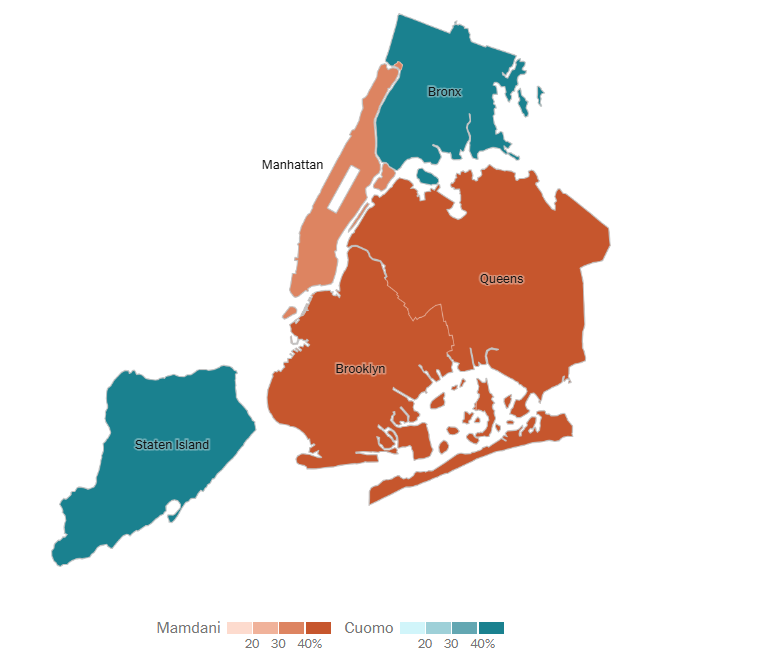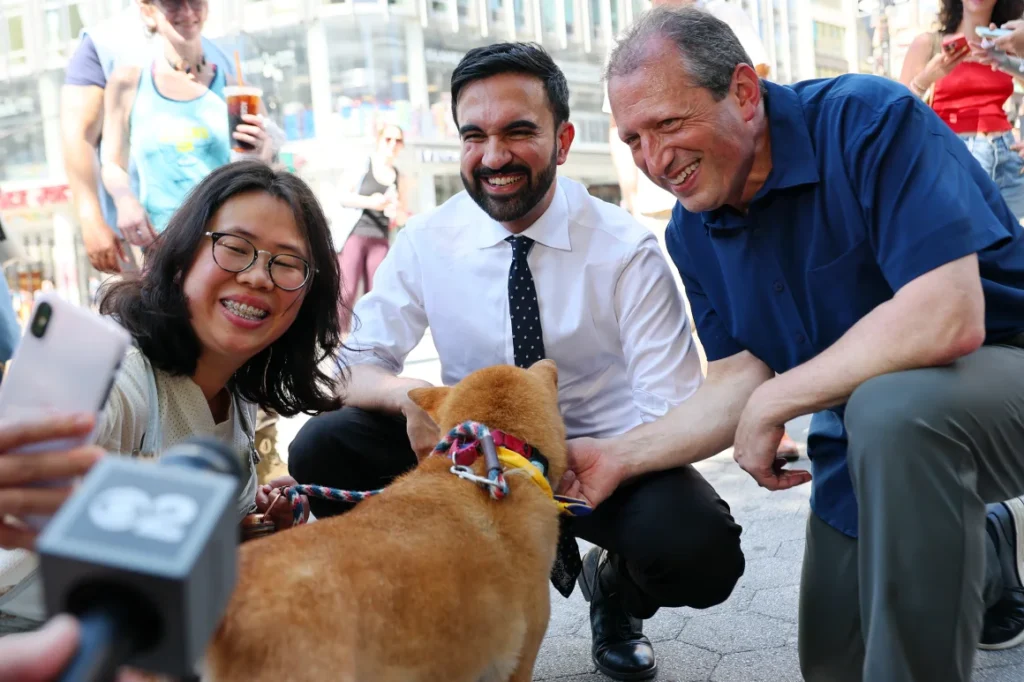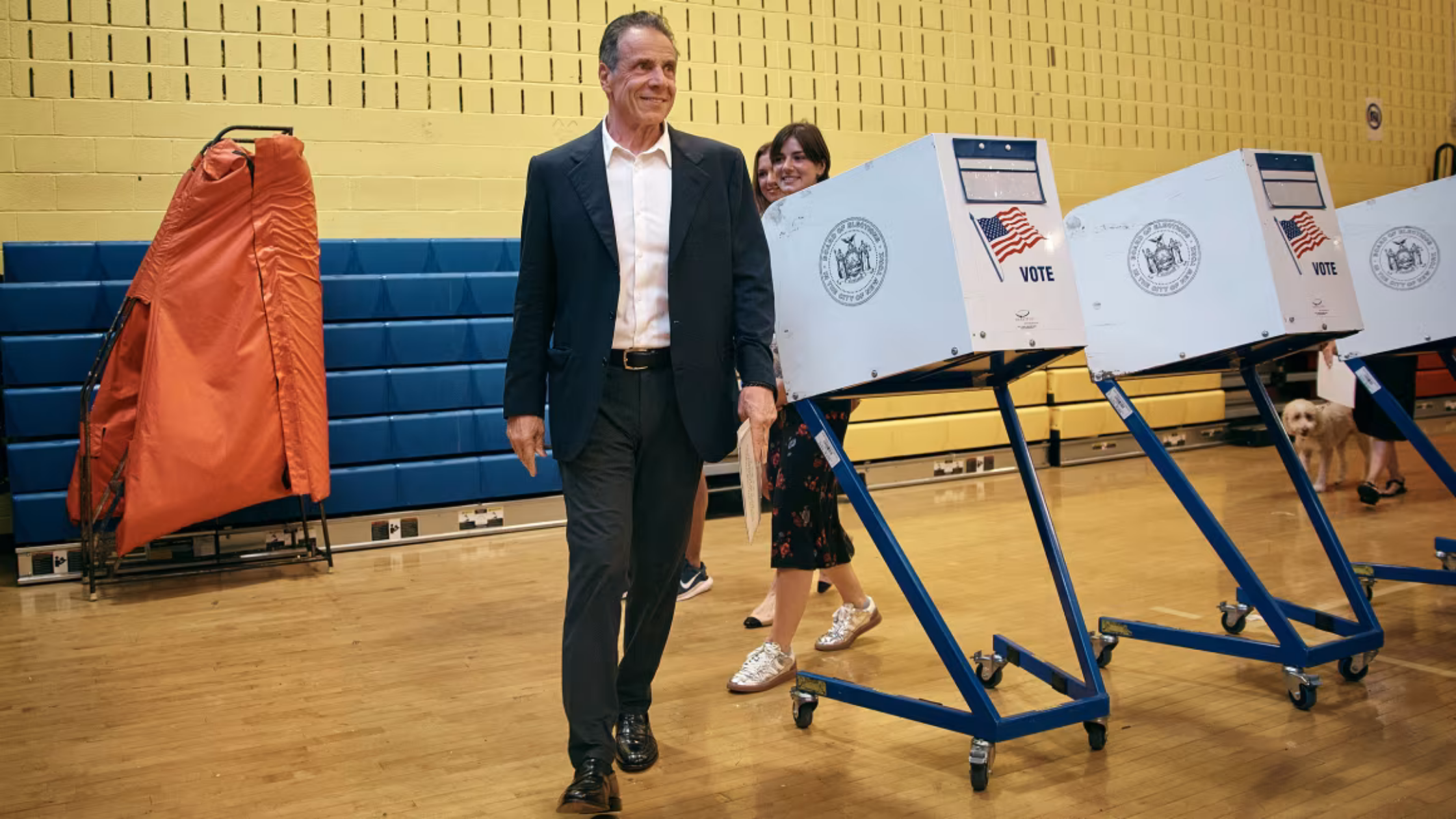New York City mayoral primary results: A progressive showdown reshapes Gotham’s political future
In a dramatic conclusion to New York City’s June 24, 2025, Democratic primary, Andrew Cuomo and Zohran Mamdani emerged as the clear front-runners in a contest that underscores the city’s ideological divide: Cuomo, the former governor, leveraged establishment support to secure a first‑round lead. Meanwhile, Mamdani — a 33‑year‑old democratic socialist representing the new left — closed the gap through dynamic grassroots organizing and bold messaging. With neither candidate exceeding 50% in the initial tally, the highly anticipated ranked‑choice runoff is set to begin July 1.

Heatwave turnout & youth surge
New York slogged through an intense heatwave on primary day, with temperatures rising above 90°F across the five boroughs. Yet voter participation soared to historic levels: approximately 831,000 votes were cast on election day, contributing to a total of 876,000 ballots, including early and absentee votes. A striking pattern emerged: about 40% of early ballots came from voters under 40—the strongest youth turnout in years, nypost.com. Analysts believe this surge heavily favored Mamdani, widely viewed as “energizing younger, disillusioned progressives,” wsj.com.
These numbers reflect a broader trend: early voting participation doubled compared to the 2021 primary. Mamdani’s creative strategy—combining old-school canvassing with viral social content—proved effective in mobilizing this demographic. As one local outlet put it, his success “shook Gotham” by blending political ambition with TikTok‑style outreach.

Cuomo’s comeback & establishment strength
Despite past scandals—including his 2021 resignation amid harassment allegations—Andrew Cuomo staged a resilient return. He secured significant union backing, high-profile endorsements (e.g., Bill Clinton, Clyburn), and major donor funding. Cuomo’s campaign emphasized pragmatic governance and public safety, a message resonating with older and moderate voters. As a City & State outlet noted, Cuomo highlighted proposed action on affordability and climate, stressing his experience as “a responsible adult”.
Cuomo’s early success in polls held steady. A recent Emerson College survey showed him slightly ahead in first-choice votes (35%–32%), though ranked‑choice redistributions painted a tighter future race. Observers warn, however, that his reliance on older, established constituencies could limit broader coalition-building.
Progressive push & ranked‑choice dynamics
Zohran Mamdani’s rise reshapes progressive strategy in NYC politics. Backed by progressive heavyweights like Bernie Sanders and AOC, Mamdani galvanized voters with policies such as free buses, rent freezes, and grocery price controls. His campaign also received institutional support: City Council Speaker Adrienne Adams and Comptroller Brad Lander both cross‑endorsed him or endorsed an anti‑Cuomo “DREAM” PAC.
Polls suggest Mamdani overtakes Cuomo in ranked-choice redistribution, scoring about 52% to 48%. However, demographic gaps remain. He leads strongly among Asian and White younger voters, trails among Black and Hispanic communities, and must expand his appeal beyond his base.
What happens next: count timeline & ranked run‑off
New York’s ranked-choice system means a drawn‑out result process. Preliminary first‑round counts were released Tuesday night. Official ranked-choice tabulations begin July 1, after mail‑in ballots are counted, with full certification expected by mid‑July—likely July 15. In 2021, Eric Adams’ victory was only confirmed two weeks after Election Day, following eight elimination rounds.
Every ranked-choice round is pivotal: once minor candidates are eliminated, their voters’ next preferences could determine the ultimate mayoral nominee. Political commentators believe progressives may carry these redistributed votes, while establishment figures aim to consolidate early leads.
Stakes for NYC & beyond: implications of the outcome
This primary transcends municipal politics—it reflects a national widening rift within the Democratic Party. A Mamdani win would mark the ascent of youthful progressivism in America’s largest city. Case in point: his campaign’s digital-savvy approach mirrors Trump’s playbook—yet with policy rooted in social equity.
Conversely, a Cuomo victory would signal resilience for the establishment and a pragmatic, centrist path. Southern moderates, labor unions, and older voters would see this as a bulwark against ideological shifts.
Broadly, NYC voters are choosing between continuity under seasoned hands or systemic change driven by younger voices. Future political narratives—from congressional races to the 2026 gubernatorial contest—will hinge on this outcome.
Conclusion
New York City’s Democratic primary has grown into a defining political juncture: Cuomo vs Mamdani, establishment vs progressivism, experience vs innovation. As ranked‑choice ballots are tallied in July, every round could flip the narrative. One thing’s certain—this pivotal contest will shape Gotham’s direction and reverberate nationwide.
“Subscribe to trusted news sites like USnewsSphere.com for continuous updates.”





